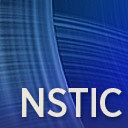Free Podcast – Progress on Establishing Trusted Identities in Cyberspace

The digitization of our lives has raised demand to establish safer and more secure ways for us to provide accurate identification for online transactions. The need to establish a ubiquitous “trusted identity” has set in motion new government initiatives to bring together stakeholders for open discussions on what identification strategies are the most effective and support protection of civil liberties and privacy while promoting interoperability.
Recently, we had the pleasure of interviewing Jim Shiere from the National Institute for Trusted Identities in Cyberspace (NSTIC) to talk about the agency’s mission and objectives, the work they are doing to foster the creation of that trusted identity, and how they are actively funding several pilot projects that rely on cooperation from otherwise disparate entities to establish more standards-based, secure ways to identify ourselves.
Please take a moment to visit our podcast page and download a copy of the NSTIC podcast. The podcast covers the following topics:
- A background on who NSTIC is, their mission and objectives, and details on the goal of creating an “Identity Ecosystem.”
- What processes and structure are needed to meet the goals of NSTIC?
- Why is now the right time to establish a national strategy for trusted identities in cyberspace?
- How easy has it become for criminals to steal online identities? Is there a shared, societal cost of identity theft?
- How delicate is the balance between creating trusted online identities and the right to privacy and what safeguards are in place to protect it?
- The benefits and value of a standards-based trusted identity for patients in healthcare.
- How NSTIC is working with the ONC and private entities to advance the initiative of establishing a trusted identity for patients in healthcare.
- NIST has interoperable standards for iris, face, and fingerprint biometrics but other forms of biometrics don’t yet have a standard. Would NSTIC ever recommend for an organization that wants to implement an identity credentialing program to select a technology that does not have an interoperable standard? How could a non-standardized identity credential hinder an organization in the future?
- As the healthcare industry moves towards a more patient centric model and opens data access to patients through online portals and other tools, what impact could a trusted online identity have on reducing medical identity theft?
- What NSTIC is doing at Inova in their AAMVA pilot in terms of “what’s next” for patient security and privacy.
Understanding more about the steps our federal government is taking to advance the trusted identity in cyberspace initiative is important in order to grasp the challenges faced and the enormity of the task.
Have an idea for a podcast? Email us at: marketing (at) m2sys.com with your ideas!










